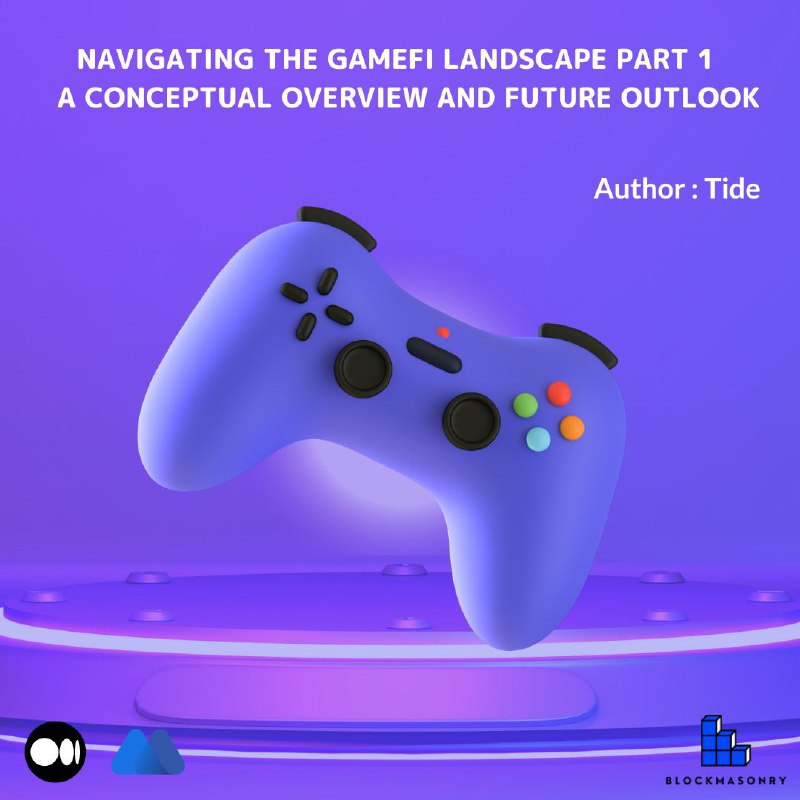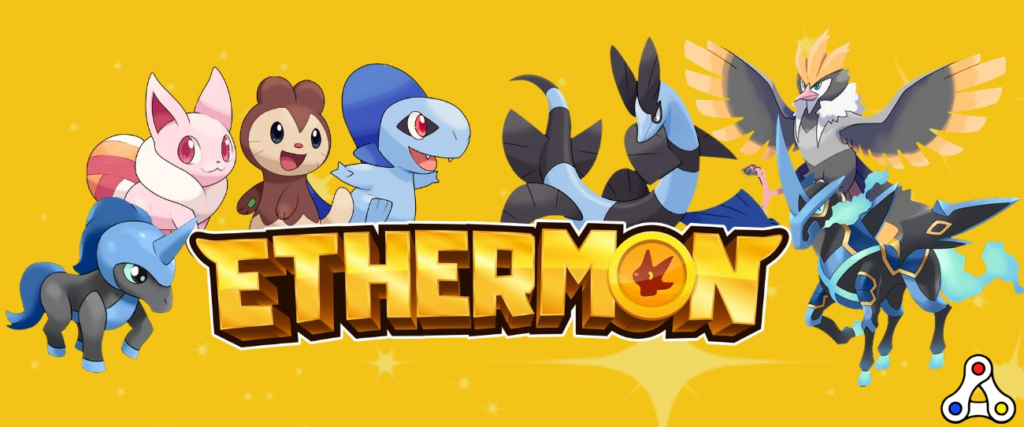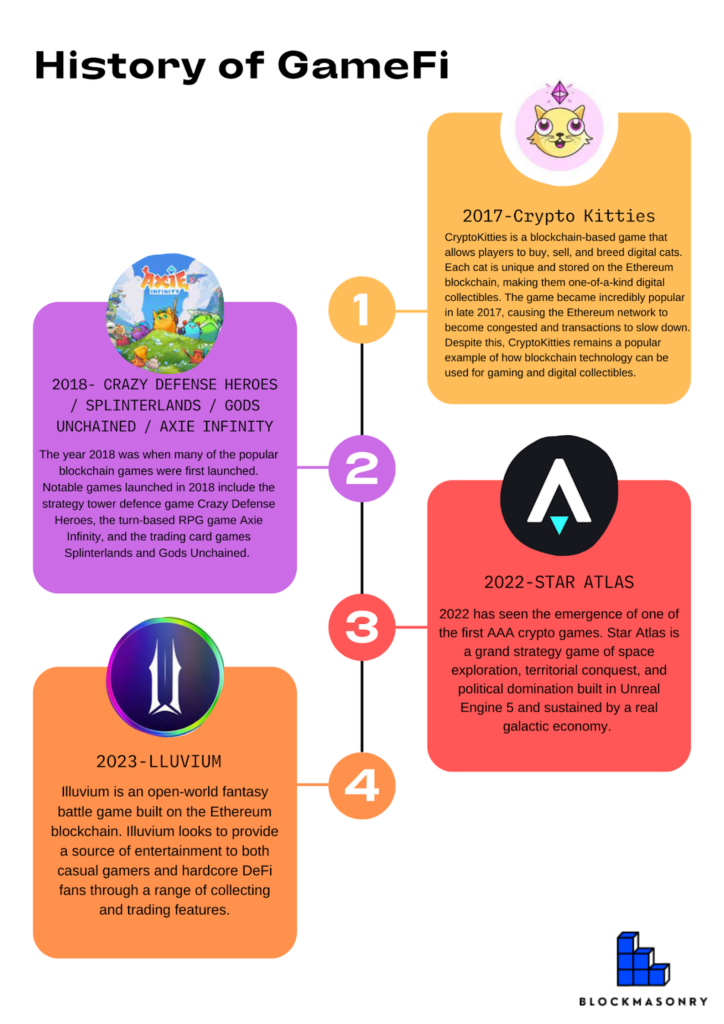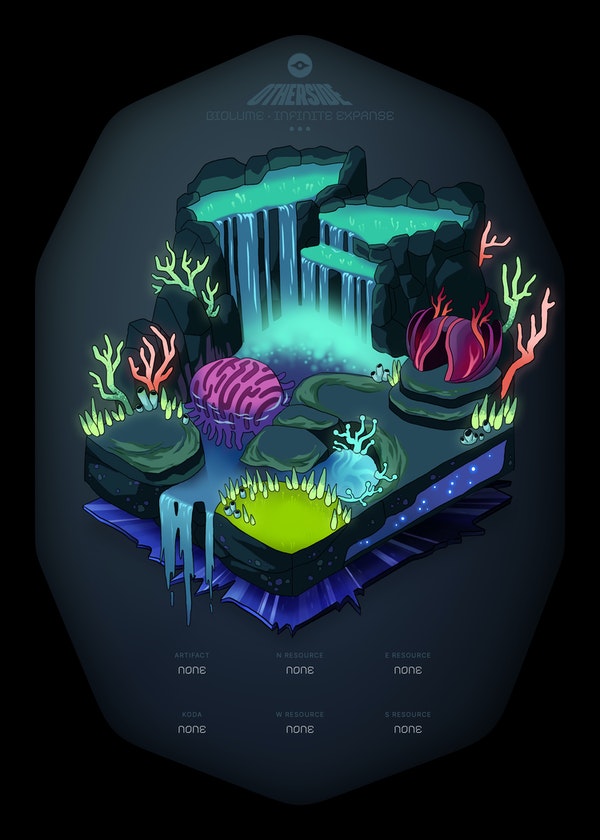In this article, we explore GameFi, uncovering its profound impact on the gaming industry and financial landscape. Gain insights into what GameFi is, its development, and the exciting opportunities and challenges that await.

Short Summary
1. The article puts the concept of GameFi into two distinctive perspectives, from a blockchain standpoint and a financial standpoint. GameFi is transforming the gaming industry by enabling players to own in-game assets and trade them beyond the traditional boundary of a game. The article also highlights the potential for GameFi to create new financial systems and economies within the gaming world.
2. The article gives an overview of GameFi’s history, features, and its impact on the wider society. While GameFi has a relatively short history, its extensive impact ranges from the casualization of professional gaming to mass adoption and education of Web 3.0 and more.
3. The article discusses the challenges and opportunities of GameFi. Market opportunities include the integration of Metaverse and the growing interest from web 2.0 gaming behemoths. Conversely, challenges remain with project longevity, cost of entry, and cross-chain interoperability of blockchain games.
1.0 Where Gaming Meets Blockchain and Finance
While there are many technical definitions of GameFi out there, the concept may be difficult to grasp for those who just got into crypto. GameFi can be better understood by simplifying it down into the intersections of ‘Game x Blockchain’ and ‘Game x Finance’.
1.1 – Game x Blockchain
In traditional games, items and currency are considered mere virtual possessions governed by the game’s rules, with players utilizing them as part of the gameplay. However, with the advent of blockchain games, a groundbreaking paradigm emerged, placing in-game assets superior to the game.
The key innovation in blockchain games (hereafter BCG) revolves around tokenizing in-game items and characters as Non-Fungible Tokens(NFTs – see definition below). As players acquire these NFTs, they become legitimate owners of the assets, granting them unprecedented control and ownership rights. Unlike traditional games, where players lose access to their in-game assets once the game service ends, BCGs empower players to retain permanent possession even after the game’s conclusion.
NFT – A cryptographic asset on a blockchain with unique identification codes
Of course, having assets alone may not hold much value if the game service ends. However, BCGs present a unique advantage with their open-source nature. Meaning, it enables the possibility of others stepping in to keep the game operational. Remarkably, in extreme cases, it becomes possible to recreate an identical game. A prime example of this occurred with the game “Etheremon”. It temporarily halted development due to depleted funds but rebranded as “Ethermon” under new management, continuing its operation. The transformative potential doesn’t stop there. The world of BCGs has witnessed instances where game assets can be converted into assets in entirely different games, granting players the ability to utilize their possessions across multiple gaming experiences.

1.2 Game x Decentralized Finance
Enabling asset ownership in the digital realm has given birth to economies and financial systems in the gaming world. This is a natural consequence given the historical context of finance that originated from exchange of goods. The integration of gaming and finance has materialized in the form of Play-To-Earn (P2E). It enables players to make profits by trading and transferring acquired in-game assets on exchanges and NFT marketplaces. Furthermore, various financial functionalities have been implemented within the game, such as the “scholarship” model, where assets are lent out, and a portion of the profits generated by the borrower’s gameplay is returned to the lender. Additionally, players can earn dividend-like profits by staking their assets. This has resulted in a diverse range of financial features being incorporated into the gaming environment.
2.0 History of GameFi

GameFi, along with BCGs in general, has a relatively brief yet remarkable history. Leading the way as the first BCG was CryptoKitties, which made its debut in November 2017. In just one month, by December 2017, CryptoKitties had already gained considerable success. They were amassing sales of $6.7 million, with top CryptoKitties fetching as high as $114,481. (CNBC)
The year 2018 witnessed the launch of several popular blockchain games, including notable titles like the strategy tower defense game Crazy Defense Heroes, trading card games Splinterlands and Gods Unchained, and the turn-based RPG game Axie Infinity. Remarkably, Axie Infinity’s governance token AXS saw an astounding surge in market capitalization, soaring from $7.75 million on November 4, 2020, to a staggering $10.49 billion on November 8, 2021, representing an unprecedented increase of 135,255% in just over one year. (Crypto.com)
As we progress into 2022 and 2023, the GameFi landscape has seen the much-awaited emergence of AAA crypto games, boasting top-tier graphics, captivating music, and immersive gameplay. One of the notable examples is StarAtlas. Excitingly, there are plans for further releases of other notable AAA crypto games throughout 2023, with titles like Shrapnel, Guild of Guardians, and Illuvium generating anticipation among gaming enthusiasts.
3.0 Features of GameFi
In this section, we’ll delve into some crucial features that define the GameFi ecosystem and how they impact the gaming experience.
3.1 Game Content
It goes without saying that to create GameFi, compelling game content is essential. It’s important to stress this point because, in the pursuit of the “Earn” element in Play-to-Earn and the focus on token economies, some released products may lack engaging gameplay or fail to function as a game. In worst-case scenarios, there are unfortunate instances where games are not released at all due to these issues.
3.2 Presale
As mentioned earlier, Blockchain Games are asset-centric, which has led to the common practice of conducting pre-sales where assets are sold before the game’s release. Consequently, this environment is susceptible to fraudulent activities where profits from asset sales are misappropriated.
To combat fraud and protect players, measures must be taken to establish trust within the GameFi ecosystem. Currently, multiple cryptocurrency exchanges and NFT marketplaces operate NFT initial sales platforms called “INO” (Initial NFT Offering) with a scrutinized process. These centralized platforms play a role in lowering entry barriers for players and fostering trust in the GameFi space.
3.3 Community
In Gamefi, the existence of players and communities holds great significance. Players are the primary custodians of assets in GameFi. For example, actions like adjusting or modifying in-game asset parameters taken by the game operator can lead to fluctuations in the asset’s value, posing risks to the player’s interests. Frequent occurrences of such actions can cause players to lose trust and confidence in the game, leading to asset sell-offs and player disengagement, ultimately threatening the game’s sustainability.
To maintain game balance and address these concerns, GameFi platforms empower player-centered communities. For instance, “My Crypto Heroes”, a Japanese-origin game, incorporates a voting mechanism for player-driven decision-making on proposals from the operators. This approach allows a part of the game management to be entrusted to a DAO-type community.
One of the fascinating aspects of GameFi is the active engagement of community volunteers in various activities. In the same BCG, community members have developed simulators that allow players to engage in pseudo-battles using their in-game assets and have even attempted to create entirely new games. This showcases how the community is beginning to explore novel ways of enjoying the game. Many GameFi projects aspire to eventually hand over their management to DAOs (Decentralized Autonomous Organizations). However, whether a community, without a centralized governing entity, can maintain the delicate balance required for a game’s success remains an unanswered question at this stage.
4.0 How Does GameFi Impact Gaming and Society?
4.1 Driving Web 3.0 Adoption and Education
Blockchain games, like solitaire for computers in the ‘90s, have the potential to drive adoption and educate users about blockchain technology. Games have historically introduced people to new tech, and now, blockchain games can teach users about wallets, gas fees for transactions, and smart contracts in an engaging way.
4.2 Changes in Monetization Models for Game Companies
One notable change for companies lies in revenue opportunities and monetization models. The revenue sources and monetization strategies in the gaming industry have evolved over time. From the traditional buy-to-play model for console games, we have witnessed the rise of various forms, such as online game distribution through the internet, downloadable content for online games, and the freemium model with in-game microtransactions.
The token economy enabled by blockchain presents an entirely different potential for generating revenue. One example is the issuance of tokens by operating companies. In existing GameFi projects, it is common to issue utility tokens with specific in-game purposes or governance tokens for community decision-making. Companies can benefit from the profits derived from the sale of these tokens or generate revenue by holding tokens and utilizing DeFi for investment purposes. Additionally, revenue can be generated through the NFTization of in-game assets and the platform fees arising from player-to-player transactions.
Token Economy – micro-economies that are entirely customizable, incentivizing behaviors through rewards and coded rules within cryptocurrencies
4.3 Generalization of Pro Gamers
We are witnessing a shift in the world of pro gamers, moving beyond traditional e-sports associations. Pro gamers now come in diverse forms, earning income through various avenues like media appearances and streaming gameplay videos. This broader definition of pro gamers includes those making a living from GameFi as well. In some countries with lower wages, GameFi projects like Axie Infinity gained massive popularity for offering higher incomes than traditional jobs. For example, in Japan, the game STEPN gained attention as top players were rumored to earn hundreds of thousands of yen daily just by playing. While some hype may have settled due to token price fluctuations, sustainable income-generating GameFi projects could lead to more players embracing professional gaming as a viable career path.
5.0 Market Opportunities
The game industry is rapidly embracing blockchain technology, making way for new business models and innovations within GameFi. Investment in the sector is soaring, with several key areas showing promising growth.
5.1 Metaverse
GameFi is integrating the metaverse across games, enabling gamers to connect, interact, and earn income through unique channels. This dynamic concept takes NFTs to the next level. It allows players to interact with their NFTs (characters, avatars, objects, in-game assets) in a virtual world. According to Bloomberg, the Metaverse industry was already valued at $47 billion in 2022. It is also projected to reach a staggering $678 billion by 2030, contributing to the long-term popularity and expansion of GameFi.
5.2 Traditional Game Developers are Joining GameFi
Major game companies are increasingly interested in exploring new horizons through Web 3.0 and GameFi. The Play-to-Earn (hereafter P2E) gaming model has attracted traditional gamers, leading traditional game developers to venture into GameFi to retain market share. Gaming giants like Ubisoft, SquareEnix, Tencent, and EA have already announced plans for GameFi and blockchain gaming, leveraging their expertise and intellectual properties (IPs) to contribute to the nascent industry’s growth. As GameFi gains popularity, these concepts may soon become mainstream and widely adopted.
6.0 Market Challenges
6.1 Sustainability
A key challenge in P2E games is sustainability. Many players prioritize earning tokens over enjoying the gameplay itself, leading to a market dominated by financially-oriented P2E titles. This focus on economic incentives rather than gameplay has resulted in sustainability issues, as players lack motivation to engage with games beyond financial gain. A continuous influx of players and funds is necessary to sustain such games, drawing criticism from the gaming community.
However, it is important to note that this is a natural progression in gaming’s evolution. As the P2E space matures, competition will increase, attracting top developers and challenging traditional AAA titles in technical complexity and player base. Blockchain technology’s benefits will enhance gaming experiences, making them more immersive and captivating. With time, we can expect blockchain gaming to overcome these challenges and reach its full potential.
6.2 Cost of Entry is Sky-High
Another significant challenge in GameFi is the high cost of entry. Many P2E games require players to purchase or mint NFTs before they can start playing. As these games gain popularity, the cost to enter also rises. For Instance, popular P2E game Axie Infinity demands new players to possess at least three different Axies, character NFTs in the game. Initially, these could be obtained at a low cost, but due to the game’s popularity, the prices soared. At its peak in 2021, new players had to pay around $350 for a starting team. Even today, after market fluctuations, the cost remains around $110 for an average team.
To address this challenge, Guilds offer a Scholarship program. It allows player communities pool resources to acquire NFT assets and rent them to new players. This profit-sharing model allows new players to access NFTs at a more affordable rate. In return, they share their gaming rewards with the Guild. However, this solution has its limitations. Guilds function as businesses and might not have the resources to offer access to an extensive array of games. The largest Guild, Yield Guild Games (YGG), currently provides access to a catalog of 30 games. As GameFi evolves, tackling the cost of entry will be crucial to ensure accessibility and inclusivity for a broader audience.
6.3 Gaming Assets are Isolated
The last challenge for GameFi’s success is cross-chain interoperability. Unlike traditional gaming, where switching between games is seamless, GameFi faces obstacles due to isolated gaming assets. Players invest time and resources in developing assets with hard-to-liquidate values. Currently, P2E games lack interoperability, and the blockchains hosting them are mostly independent. With over fifteen major blockchains and more emerging, transferring NFTs across gaming blockchains is often impractical, leading to siloed in-game assets.
The concept of scaling blockchains or layer 2 solutions is being discussed within the crypto and GameFi communities. While some chains offer outright interoperability, such as Cosmos, Polkadot, and Avalanche, these are not prevalent in GameFi. Instead, originators like Ethereum rely on “layer 2 solutions” to enable different blockchain networks to communicate. Interoperability through such solutions could be a key factor in driving mass adoption, particularly in gaming, where the potential for in-game monetization via NFTs is significant.
Conclusion
There is a divergence of opinions on whether GameFi should be considered an evolution of gaming or an extension of finance. If the gaming aspect becomes too dominant, it would be no different from traditional games. On the other hand, if the financial aspect becomes too dominant, it may lose its essence as a game, leading to player disengagement when profitability declines. To consider a more sustainable GameFi, the focus should probably be on “play and earn” rather than just “Play to earn,” where players can earn rewards while enjoying the gameplay. There is no single ideal form, and among the numerous GameFi projects, players are expected to choose what suits their preferences, allowing them to play freely and earn freely, embodying the essence of the Web 3.0 world, which is all about freedom.
Personal Note From MEXC Team
Check out our MEXC trading page and find out what we have to offer! There are also a ton of interesting articles to get you up to speed with the crypto world. Lastly, join our MEXC Creators project and share your opinion about everything crypto! Happy trading! Learn about interoperability now!
Join MEXC and Start Trading Today!



